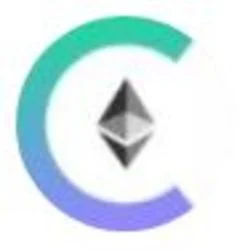Holesky Testnet Takes Flight On Merge Anniversary Amidst Ethereum 30-Day Slump

One year has passed since the Ethereum (ETH) Merge, which marked the integration of Ethereum’s proof-of-stake (PoS) Beacon Chain with the Ethereum Mainnet.
This significant milestone facilitated the transition of the Ethereum blockchain from the legacy proof-of-work (PoW) system to a PoS model, giving rise to Ethereum 2.0.
The completion of the Merge on September 15, 2022, brought about a major shift in Ethereum’s energy consumption, with an expected reduction of 99.95%. Additionally, this transition opened up new possibilities for scaling the Ethereum ecosystem.
The merge involved migrating the entire blockchain to new PoS validator nodes, which require participants to stake or lock up 32 Ether (ETH) to participate in the network.
Importantly, this transition did not impact Ether tokens held by investors, and the operations of Ethereum-based applications remained unchanged. As Ethereum celebrated the first anniversary of The Merge, it introduced its latest testnet called Holesky.
The Future Of Ethereum Development And Testing?
Initially known as Holli, the Holesky testnet is designed to enhance the testing environment on Ethereum. Drawing inspiration from a vibrant neighborhood in Prague, Czech Republic, this new testnet offers various improvements over its predecessor, Goerli.
According to a blog post from the software development firm Tatum, Holesky is set to replace Goerli as the primary testnet for staking, infrastructure, and protocol development. For testing decentralized applications, smart contracts, and other Ethereum Virtual Machine (EVM)-related functions, the Sepolia testnet remains the preferred choice.
Holesky, on the other hand, serves as Ethereum’s merged-from-genesis public testnet, mirroring mainnet functionalities and enabling precise evaluations through thorough staking trials, infrastructure assessments, and direct protocol developer testing. To ensure rigorous testing, Holesky aims to have twice as many active validators as the main Ethereum network.
The network starts with a solid foundation of 1 million validators, encouraging teams to run a substantial number of validators, with each team handling around 100,000 validators. These measures contribute to the comprehensive evaluation of the testnet and intended functionality.
According to Tatum’s blog post, by introducing Holesky and refining inflation mechanisms based on the Sepolia testnet, Ethereum continues to evolve and improve its protocols.
One Year After The Merge
In a recent post on X (Formerly Twitter), the self-proclaimed Ethereum Educator, who goes by the pseudonym “Sassal.eth,” highlighted some notable statistics on the first anniversary of The Merge.
One significant achievement for Ethereum since the Merge is burning 980,000 ETH tokens, resulting in a permanent reduction of Ethereum’s total supply. Burning ETH involves removing tokens from circulation, contributing to potential scarcity and value.
Additionally, the Ethereum 2.0 network has seen a significant 11.6 million ETH being staked, which involves locking up ETH as collateral to participate in the proof-of-stake consensus mechanism.
Moreover, according to Sassal, adding 362,000 new validators has strengthened the Ethereum network. Validators are crucial in proposing and validating new blocks, ensuring the network’s security and overall robustness.
On the other hand, Ethereum’s native token, ETH, has experienced a tumultuous journey in terms of its price performance since the beginning of the year. Despite reaching an annual high of $2,144 on April 16, ETH has been impacted by the overall market trend, resulting in significant losses across various time frames.
Currently, ETH is trading at $1,619, representing a 1% decline in the past 24 hours. Similarly, over the past seven days, the token has recorded a decrease of 0.9%.
Looking at the fourteen and 30-day time frames, ETH has experienced declines of 1% and 11.3%, respectively, underscoring the prevailing downward trend for the token’s value.
However, it is worth noting that since the occurrence of The Merge, ETH has witnessed a moderate rise of 7.6% year to date, according to Coingecko data.
Featured image from iStock, chart from TradingView.com





































































































